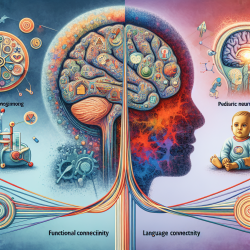Understanding the Need for Humane Euthanasia Alternatives
The use of carbon dioxide (CO2) for euthanizing laboratory animals, particularly rodents, has been a standard practice due to its cost-effectiveness and efficiency. However, recent research, as discussed in the article "Alternatives to Carbon Dioxide—Taking Responsibility for Humanely Ending the Life of Animals," has highlighted significant welfare concerns associated with CO2 exposure. This blog aims to provide practitioners with insights into these findings and encourage further research into humane alternatives.
Key Findings from the Research
The Swiss Federal Food Safety and Veterinary Office organized a symposium to address the drawbacks of using CO2 for euthanasia. The symposium concluded that CO2 is aversive to rodents, causing anxiety, fear, and pain. This conclusion was supported by evidence from behavioral studies and physiological assessments. The research emphasized the need for alternatives that minimize distress and ensure a humane end-of-life experience for laboratory animals.
Criteria for a Humane Euthanasia Method
During the symposium, experts defined criteria for a "good death" for animals, which include:
- Absence of suffering, pain, anxiety, stress, or distress
- Reliability and control under expert supervision until death
- Immediate, irreversible action
- Safety for staff and other animals
- Environmental contamination avoidance
These criteria serve as a guideline for evaluating and developing new euthanasia methods.
Exploring Alternatives to CO2
The symposium explored several alternatives to CO2, including inhalant anesthetics like sevoflurane and isoflurane, which showed promise in reducing aversion and distress in rodents. Inert gases such as nitrogen and xenon were also considered for their potential to minimize epileptiform activity and behavioral excitation compared to CO2.
Practitioners are encouraged to consider these alternatives and contribute to ongoing research efforts to refine euthanasia protocols. The symposium's "World Café" brainstorming session generated innovative ideas, such as using technology to monitor animal welfare parameters and refining breeding programs to reduce surplus animals.
Encouraging Further Research and Collaboration
The symposium highlighted the importance of interdisciplinary collaboration in developing humane euthanasia methods. Practitioners are urged to engage with researchers, animal welfare organizations, and policymakers to advance this field. By contributing their expertise and insights, practitioners can help shape a research strategy that prioritizes animal welfare and aligns with societal values.
Conclusion
As we move towards more humane practices in animal research, it is crucial for practitioners to stay informed about the latest developments and actively participate in the search for alternatives to CO2 euthanasia. By implementing the outcomes of this research and fostering a culture of continuous improvement, we can ensure better welfare outcomes for laboratory animals.
To read the original research paper, please follow this link: Alternatives to Carbon Dioxide—Taking Responsibility for Humanely Ending the Life of Animals.










